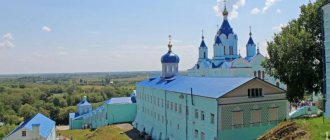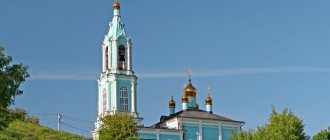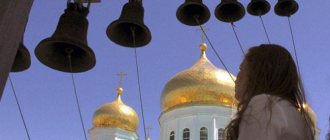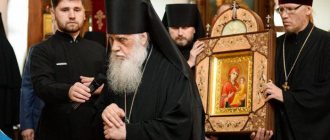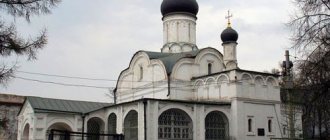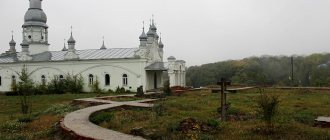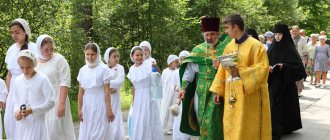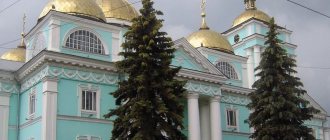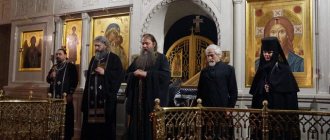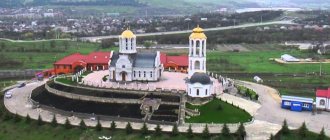Mir
Russia Yaroslavl Region Rostov Rostov Convent of the Nativity of the Blessed Virgin Mary Map is loading…
{"format":"leaflet","minzoom":false,"maxzoom":false,"limit":50,"offset":0,"link":"all","sort":[""], "order":[],"headers":"show","mainlabel":"","intro":"","outro":"","searchlabel":"\u2026 \u0441\u043b\u0435\ u0434\u0443\u044e\u0449\u0438\u0435 \u0440\u0435\u0437\u0443\u043b\u044c\u0442\u0430\u0442\u044b","default":"","import-annotation":false,"width ":"auto","height":"350px","centre":{"text":"","title":"""link":"""lat":57.185484999999999899955582804977893829345703125,"lon": 39.42099400000000031241143005900084972381591796875,"icon":""},"title":"","label":"","icon":"","lines":[],"polygons":[],"circles":[ ],"rectangles":[],"copycoords":false,"static":false,"zoom":8,"defzoom":14,"layers":["OpenStreetMap"],"image layers":[] ,"overlays":[],"resizable":false,"fullscreen":true,"scrollwheelzoom":true,"cluster":false,"clustermaxzoom":9,"clusterzoomonclick":true,"clustermaxradius":80, "clusterspiderfy":true,"geojson":"","clicktarget":"","showtitle":true,"hidenamespace":false,"template":"","userparam":"","activeicon": "","pagelabel":false,"ajaxcoordproperty":"","ajaxquery":"","locations":[{"text":"\u003Cb\u003E\u003Ca href=\"/palomnik/%D0% A0%D0%BE%D1%81%D1%82%D0%BE%D0%B2%D1%81%D0%BA%D0%B8%D0%B9_%D0%B6%D0%B5%D0%BD% D1%81%D0%BA%D0%B8%D0%B9_%D0%BC%D0%BE%D0%BD%D0%B0%D1%81%D1%82%D1%8B%D1%80%D1% 8C_%D0%A0%D0%BE%D0%B6%D0%B4%D0%B5%D1%81%D1%82%D0%B2%D0%B0_%D0%9F%D1%80%D0%B5% D1%81%D0%B2%D1%8F%D1%82%D0%BE%D0%B9_%D0%91%D0%BE%D0%B3%D0%BE%D1%80%D0%BE%D0% B4%D0%B8%D1%86%D1%8B\" title=\"\u0420\u043e\u0441\u0442\u043e\u0432\u0441\u043a\u0438\u0439 \u0436\u0435\u043d\u0441\u043a\ u0438\u0439 \u043c\u043e\u043d\u0430\u0441\u0442\u044b\u0440\u044c \u0420\u043e\u0436\u0434\u0435\u0441\u0442\u0432\u0430 \u 041f\u0440\u0435\u0441\u0432\ u044f\u0442\u043e\u0439 \u0411\u043e\u0433\u043e\u0440\u043e\u0434\u0438\u0446\u044b\u003E\u0420\u043e\u0441\u0442\u043e\u 0432\u0441\u043a\u0438\ u0439 \u0436\u0435\u043d\u0441\u043a\u0438\u0439 \u043c\u043e\u043d\u0430\u0441\u0442\u044b\u0440\u044c \u0420\u043e\u0436\u 0434\u0435\u0441\u0442\u0432\ u0430 \u041f\u0440\u0435\u0441\u0432\u044f\u0442\u043e\u0439 \u0411\u043e\u0433\u043e\u0440\u043e\u0434\u0438\u0446\u044b\u0 03C/a\u003E\u003C/b\ u003E\u003Chr /\u003E\u003Ca href=\»/palomnik/%D0%A1%D0%B2%D0%BE%D0%B9%D1%81%D1%82%D0%B2%D0%BE:%D0 %90%D0%BD%D0%BD%D0%BE%D1%82%D0%B0%D1%86%D0%B8%D1%8F\" title=\"\u0421\u0432\u043e\u0439\u0441 \u0442\u0432\u043e:\u0410\u043d\u043d\u043e\u0442\u0430\u0446\u0438\u044f\»\u003E\u0410\u043d\u043d\u043e\u0442\u0430\u0446 \u0438\u044f\u003C/ a\u003E: \u043e\u0441\u043d\u043e\u0432\u0430\u043d \u0432 XIV \u0432\u0435\u043a\u0435 \u0441\u0432\u044f\u0442\u044b\u043c \ u0430\u0440\u0445\u0438\ u0435\u043f\u0438\u0441\u043a\u043e\u043f\u043e\u043c \u0424\u0435\u043e\u0434\u043e\u0440\u043e\u043c, \u043f\u043b\u0435\u 043c\u044f\u043d\u043d\u0438 \u043a\u043e\u043c \u043f\u0440\u0435\u043f\u043e\u0434\u043e\u0431\u043d\u043e\u0433\u043e \u0421\u0435\u0440\u0433\u0438\ u044f\u0420\u0430\u0434\u043e \u043d\u0435\u0436\u0441\u043a\u043e\u0433\u043e","title":"\u0420\u043e\u0441\u0442\u043e\u0432\u0441\u043a\u0438\u0439 \u0436\u 0435\u043d\ u0441\u043a\u0438\u0439 \u043c\u043e\u043d\u0430\u0441\u0442\u044b\u0440\u044c \u0420\u043e\u0436\u0434\u0435\u0441\u0442\u0 432\u0430\u041f\u0440\u0435\ u0441\u0432\u044f\u0442\u043e\u0439 \u0411\u043e\u0433\u043e\u0440\u043e\u0434\u0438\u0446\u044b","link":"","lat":57.18548499999999 9899955582804977893829345703125,"lon": 39.42099400000000031241143005900084972381591796875,"icon":""}],"imageLayers":[]}
57.185485; 39.420994
Russia, Yaroslavl region, Rostov, Sovetskaya square, 14
Rostov, Yaroslavl region 152151
Russia
Telephone:
8 (48536) 6-35-83
Rostov Convent of the Nativity of the Blessed Virgin Mary
founded in the 14th century by the holy Archbishop Theodore, nephew of St. Sergius of Radonezh.
History[edit]
1390-1395 - Founded by Saint Theodore, Archbishop of Rostov (-1395). 1649 - A letter from Tsar Alexander Mikhailovich was sent to the monastery about the issuance of grain bread to the Nativity Monastery from the palace village of Voshchazhnikovo. 1653 - A letter from Tsar Alexei Mikhailovich was sent to the monastery to issue a salary to Abbess Praskovius of 16 altyns and 4 money, and to the sisters 10 altyns from customs revenues annually.
1668 - A letter from Tsar Alexei Mikhailovich was sent to the monastery about issuing grain bread to Abbess Iraida with her sisters and church clerks, not from the village of Voshchazhnikov, as before, but from the village of Velikoye. 1684 - A letter from Tsars Ivan Alekseevich and Peter Alekseevich was sent to the monastery to increase the territory of the monastery.
1686 - A letter from Tsars Ivan Alekseevich, Peter Alekseevich and Princess Sofia Alekseevna was sent to the monastery, according to which the monastery was granted a mill on the Mogza River with many lands near the palace village of Voshchazhnikova.
1687 - A letter from Tsars Ivan Alekseevich, Peter Alekseevich and Princess Sofia Alekseevna was sent to the monastery, according to which the monastery was granted an island on Lake Nero, including two acres of convenient hay land and one inconvenient. 1680s - On the site of the wooden building of the Cathedral of the Nativity of the Blessed Virgin Mary, Metropolitan Jonah (Sysoevich) of Rostov built a stone one. 1690 - The monastery was granted 13 wastelands in the Rostov district.
1702 - There are 90 nuns in the monastery. 1707 - December 21, Saint Demetrius, Metropolitan of Rostov, made a contribution to the monastery - “The Lives of the Saints”. 1715 - Under Abbess Natalia (Tyapkina; 1682-1723), the walls and vaults of the Nativity Cathedral were painted. 1725 - By resolution of Archbishop Georgy (Dashkov), the nuns of the Nativity Monastery were moved to the Rostov Trinity Monastery, near Varnitsa, which was then converted into a nunnery for several years.
1731 - By decree of His Grace Joachim, the nuns were transferred to their former Nativity Monastery. 1736 - Archbishop Joachim canceled the procession with the Tikhvin Icon of the Blessed Virgin Mary. 1742 - At the request of Abbess Eudoxia, Metropolitan Arseny (Matseevich) resumed the religious procession with the shrine of the monastery - the Tikhvin Icon of the Blessed Virgin Mary. 1744 - On the lower floor of the Nativity Cathedral, the temple in the name of St. Alexis, the man of God, was restored and consecrated. 1764 - The nuns of the abolished Trinity Convent, on Bor, were transferred to the Nativity Monastery.
— According to the reform of the distribution of monasteries by category, the Nativity Monastery becomes a full-time third-class monastery. 1772 - In the Nativity Cathedral, at the expense of the nun Nadezhda (Dashkova), according to her will, the chapel in the name of Cosmas and Damian was restored and reconsecrated in honor of the Trinity.
— It is forbidden to bury deceased nuns within the walls of the Nativity Monastery, as it is located inside the city, and to bury them in the Trinity-Varnitsky, or Petrovsky, or in the Epiphany monasteries. 1794 - On the lower floor, under the Trinity chapel, a chapel was built and consecrated in the name of St. Demetrius of Rostov, the miracle worker.
1810 - A porch was built that unites the churches on the upper and lower floors of the Nativity Cathedral. 1817 - In place of the dilapidated bell tower, a new one was built above the porch of the Nativity Cathedral. 1818 - On May 10, Empress Maria Feodorovna visited the monastery.
1835 - A monastery hotel was built in the northwestern corner of the monastery. 1847 - On September 7, in honor of the Tikhvin Icon of the Blessed Virgin Mary, Archbishop of Yaroslavl and Rostov Evgeny (Kazantsev) built a temple through the efforts of Abbess Pavla (Shatilova) at the expense of the monastery and the Rostov merchant Maxim Mikhailovich Pleshanov.
1852 - A two-story building with a refectory on the second floor was added to the Tikhvin Church. 1854 - On December 3, a chapel in the name of St. Nicholas and the Great Martyr Barbara was consecrated in the refectory. 1856 - On January 15, the second chapel in honor of the Tolga Icon of the Mother of God was consecrated in the refectory. 1883 — The wall paintings of the Nativity Cathedral were renewed.
1894 - On July 19, the monastery was visited by the holy righteous John of Krondstadt. 1907 - May 21 The Divine Liturgy in the Tikhvin Church was served by St. Tikhon (Belavin), Archbishop of Yaroslavl and Rostov (1907-1913), future Patriarch of Moscow and All Russia. 1926 - Closing of the monastery. The Nativity Cathedral has been transferred to the museum. There is a library in the Tikhvin Church, and apartments for the townspeople in the cells. 1926 - The city archive was housed in the Nativity Cathedral.
1960s - The bell tower of the Nativity Cathedral was dismantled. 1989 — Due to the emergency condition of the Nativity Cathedral, the city archive was removed and the cathedral was transferred to the museum. 1992 - The Employment Center was opened in the premises of the former cells.
1997 - The Nativity Monastery, in disrepair, was returned to the Russian Orthodox Church; the city children's library is located in the Tikhvin Church; 40 families live in the former cells. — On February 17, the first nuns of the monastery settled here along with the abbess, nun Neophyta, who a month later took monastic vows with the name Paul.
7/20 — On Palm Sunday, the first Divine Liturgy took place in the Trinity Church of the Nativity Cathedral. 1998 — The house church in the name of the Apostles Peter and Paul was consecrated.
1999 - The Church of St. Nicholas was transferred to the Nativity Monastery. 2001, Easter - The abbess of the monastery, nun Pavla, was elevated to the rank of abbess.
Maria Chernigovskaya
The founder of the Spaso-Pesotsky or, as it was popularly called, the Princess Monastery, deserves at least a short story. Who is she and what was she like?
An intelligent and active woman. The respectful daughter of Prince Mikhail Vsevolodovich, who went down in history as Mikhail of Chernigov. Loving wife of the prince from Rostov Vasilko Konstantinovich. A good mother who raised two wonderful sons. A visionary politician and peacemaker. A relative of Alexander Yaroslavovich, the one who would become Nevsky. She is a compiler of chronicles containing heartfelt stories about the exploits and valor of the Russian people.
Princess Marya and Prince Vasilko got married in 1227. How can you find out after almost eight centuries what the young people felt towards each other? The chronicles don’t write about this... But a lot says that the couple was happy in their family life. The young couple first had a son, Boris, and then a second, Gleb, was born...
The Russian princes in this century were sorely lacking in unity; ambition and pride prevented them from acting together. Therefore, the names given to the princely children - Boris, Gleb - had the deepest meaning, obvious to the people of that time.
But the year 1237 came and misfortune struck the Russian land - the hordes of Batu surged. In the battle on the Sit River, Prince Vasilko of Rostov died a martyr's death. Maria Chernigovskaya became a widow at the age of 25, her children at that time were - the eldest was 7 years old, the youngest was not even two. She takes control of the principality into her own hands and rules it wisely until her sons come of age.
The Rostov chronicles of the mid-13th century are unusual; they contain a lot of poetic information concerning the personality of Prince Vasilko, details about the heroic and martyrdom of Mikhail Chernigovsky at the hands of the Tatars. Maria received them first-hand, from her son Boris, who was an eyewitness to the death of his grandfather in the horde. Written by a loving and talented hand, her chronicles are directly related to the canonization of people dear to her and to their veneration among other all-Russian saints.
Current state[edit]
The revival of the Nativity Monastery began on February 17, 1997, when five nuns from the Tolga Monastery entered the walls of the monastery. A terrible picture of complete desolation and destruction appeared before their eyes.
The first nuns had nothing: no firewood, no food, no benefactors - only faith in the help of the Mother of God and the Rostov saints. In all churches and monasteries returned to the Russian Orthodox Church, restoration began with the cleaning of the territory and buildings and the removal of dirt and debris. It was the same here.
We settled in one unheated cell. The Mother of God sent the first helpers to the sisters: seeing their hard work, local residents reached out to the monastery with their gifts: some carried potatoes, some bread, and some their warm clothes.
We collected money for roofing iron and covered the roof of the Nativity Cathedral, which was leaking quite a lot at that time. At the same time, they prepared the Trinity chapel for worship: they restored the iconostasis and filled it with paper icons, put up sand candlesticks, arranged a lectern, and purchased liturgical books. On Palm Sunday, the first Divine Liturgy was celebrated in the monastery. Over time, the abbot's building and the Patriarch's chambers were restored.
2011 opened the next stage in the restoration of the Monastery of the Nativity of the Blessed Virgin Mary. He laid the foundation for the establishment of vital communications. The Lord alone knows how over the past three years, with extreme scarcity of funds and strength, work was carried out to install external water supply and sewerage systems, an underground gas pipeline was connected to the monastery and internal gas supply was installed for 2 buildings.
October 28, 2014, on the day of the celebration of the icon of the Mother of God “Spreader of the Loaves” and the memory of St. Athanasius of Spain, Bishop of Kovrov, a historical event occurred. Gas was supplied to the monastery's facilities, which for more than 600 years had been heated only with wood and coal.
All this time, the improvement of the territory of the monastery has not stopped: clearing debris, scrap metal and beautifying it with flower plantings. A small monastery garden of fruit trees and berry bushes was laid out, a simple monastery vegetable garden was organized, which has already produced the first harvests of vegetables for the meal. At the same time, Mother Abbess Afanasia required intense efforts to “collect the monastery stones and earth.” During this period, all the necessary procedures were carried out to transfer the former cell buildings and the temple in honor of the Icon of the Mother of God of Tikhvin back to the monastery. To date, the land plot on which the monastery ensemble is located has been legally registered and transferred to the monastery for the maintenance of its facilities.
About the location and name
The full name of the monastery is Spaso-Yakovlevsky Dimitrievsky monastery. What does a long string of words mean? And another question: why is one of his churches located outside the monastery walls? Let's start with the name. More precisely, from the end of the title.
Many will smile: “Well, it’s understandable that it’s male, since only men live there.”
But the monks themselves will never say that. Firstly, they come to the monastery NOT to live, but to be saved. And secondly, it is incorrect to say that there are only men there. There are no monasteries with only male monks or exclusively female nuns.
The point here is this: any church sacrament is performed only by a male priest. Therefore, to perform rituals, male presence is required in a nunnery; on the other hand, in monasteries there are always lay women performing certain jobs, for example, in the kitchen or in the bakery.
I recently learned something completely surprising: it turns out that in the Zhytomyr region there has been a church for half a century – and it’s not Catholic, but Orthodox! – A male and, at the same time, a female monastery. In the quiet refuge of the St. George’s monastery in the village of Gorodnitsa, 46 sisters and 40 brothers pray and work together...
Go ahead. Thanks to those acquired in 1757. the relics of the Metropolitan of Rostov Dimitri, as a sign of respect for this saint, Dimitriev was added to the name.
And earlier, in 1389, Jacob occupied the episcopal see in Rostov. An interesting point: He was NOT only a contemporary of the intercessor and prayer book of the Russian land, St. Sergius, but also his fellow countryman.
Jacob, a native of simple peasants, soared high, and for his pious life he was honored to be appointed bishop. But fate destined him to unexpectedly postpone all apostolic affairs and found a small monastery, which would then magnificently grow into the Spaso-Yakovlevsky Monastery of Rostov the Great.
It so happened that at this time a certain Rostov woman was sentenced to execution. What offenses resulted in such severe punishment, the chronicle is silent, vaguely calling them “lawlessness.” But the unfortunate woman threw herself at Jacob’s feet, begging for mercy. The head of the diocese showed mercy and “did not hand her over to death,” choosing repentance as punishment for the criminal.
This so outraged the Rostov prince and the citizens of the city that they expelled the bishop, who immediately became objectionable.
The exiled Jacob went out to the lake, took off his holy robe, spread it on the water, stood on it and swam. People ran along the shore after the miracle and begged for forgiveness. The cloak landed on the shore, the saint forgave the repentant Rostovites, forgot the insult done to him, but did not return back to the city. So on this place a holy monastery arose, in which fraternal cells with a wooden church were built in honor of the Conception of the Most Holy Theotokos by righteous Anna. It was here in the Yakovlevsky monastery that Jacob ended his days.
But, it should be noted, near the unplanned monastery, another monastery existed for more than a century - Spaso-Pesotsky. At the height of the Mongol invasion, it was founded by an extraordinary woman - the Rostov princess Marya of Chernigov. Of the entire monastery ensemble, the only building that has reached us is the Transfiguration Cathedral, rebuilt in stone in the 17th century.
In 1765, Empress Catherine the Great abolished the ancient monastery of the Savior on the Sands. The lands were transferred to the state, and all the churches and buildings that belonged to it were assigned to the Spaso-Yakovlevsky Dmitrievsky Monastery. They began to belong, but physically they remained in the same place. That is why it turned out that the Church of the Transfiguration is located outside the stone wall with towers enclosing the existing monastery.
Patronal holidays[edit]
Nativity of the Blessed Virgin Mary
- September 21
September 21/October 4 Finding of the relics of St. Demetrius, Metropolitan of Rostov (1752
Icon of the Most Holy Theotokos “Joy of All Who Sorrow”
— November 6
October 28/November 10 St. Demetrius, Metropolitan of Rostov (1709)
December 4/17 Martyr Barbara (c. 306)
Nicholas the Wonderworker, Archbishop of Myra, Saint
— May 22, December 19
March 17/30 of St. Alexis, man of God (411)
May 23/June 5 Cathedral of Rostov-Yaroslavl Saints: Hierarchs and Wonderworkers of Rostov
Icon of the Blessed Virgin Mary "Tikhvin"
— July 9
Icon of the Most Holy Theotokos “Tolgskaya”
— August 21
Countess Anna Alekseevna Orlova-Chesmenskaya
In 1824, the stone chapel at the Conception Cathedral was dismantled and the Yakovlevsky Church was built. The model for it was the St. Demetrius Cathedral. There was a certain subtext in this - each of them is dedicated to a great saint, who are separated by centuries, but are united by the help to the suffering that they provide to those who fall with hope to their holy relics.
This temple was built with the money of the young Countess Anna Alekseevna Orlova-Chesmenskaya, the only daughter of the famous associate of Catherine II - Alekhan Orlov, the probable murderer of her husband Peter III and the kidnapper of the unfortunate Princess Tarakanova.
There was no other bride like this in Russia. Next to her there were always many contenders for her girl’s heart, and, let’s be honest, for the multimillion-dollar dowry that came with the heart. But her father did not rush her into marriage.
And then Alexey Grigorievich unexpectedly died quickly. Anna was 22 years old at this time. With his death, the girl’s familiar world collapsed and everything around her was empty - her father meant so much in her life, sheltering her from all life’s hardships, like a mighty oak tree under its crown.
There are no words to express the scale of the wealth that began to belong to this girl. But she inherited from her father not only a huge fortune, but also endurance and strength of character. The crowd of admirers continued to grow, but her heart fluttered only once - when she met Count Nikolai Kamensky. But something didn’t work out in their relationship...
Then the Countess, having rejected all the suitors, decides to devote herself to charity and religion. She goes to monasteries on pilgrimage - first to Kyiv, and then to Rostov to the Spaso-Yakovlevsky Monastery. She would travel here regularly until 1820.
Until in her life she meets the odious Pyotr Nikitich Spassky, known as Archimandrite Photius. He will exert a powerful influence on the countess, subjugate her will, enslave her soul, and get her fortune into his hands.
Their relationship will become an unsolvable mystery, an object of close interest and gossip for contemporaries. But this is a different topic and a different monastery...
Pilgrim[edit]
There is no information about the monastery hotel.
There is a hotel at the Trinity-Sergius Varnitsky Monastery.
The hotel is located on the territory of the Trinity-Sergius Varnitsa Monastery near Lake Nero. The rooms are cozy and quiet. There is a homely atmosphere and peace inside. In frosty weather the rooms are very warm. The staff is welcoming, friendly and caring. The school students will be happy to give you excursions around the monastery and its surroundings. The food is also homemade, always freshly baked bread, shortcakes and pies. There is a shop on site where you can buy some food.
Praskovya Zhemchugova
Demetrievsky Cathedral - a portico with steps made of white stone, columns with capitals, sculptures of martyrs in niches, stucco bas-reliefs - was built at the expense of the incredibly wealthy Count Sheremetyev. Therefore, it is sometimes called Sheremetyevsky.
It is believed that it was built according to a vow associated with the touching and sinful love of Nikolai Petrovich for the Yaroslavl Cinderella - the talented serf actress and singer Parasha Zhemchugova.
She is Yaroslavl insofar as all three existing versions about the place of her birth lead to the village of Borisoglebsky, which is near Rostov.
